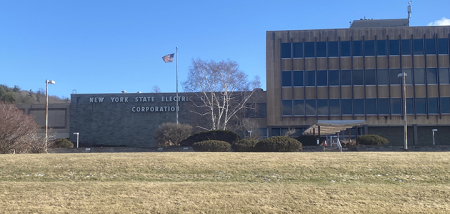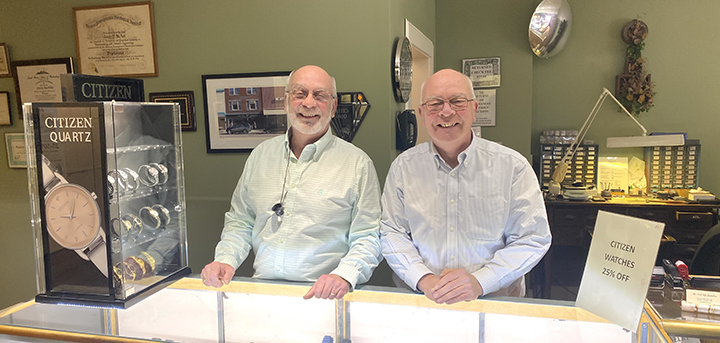Keep Calm And Kerri On: ‘Quarter Millennium’
Published:
June 13th, 2022
By:
Sun Columnist Kerri Green

Dear Friends,
This past weekend I celebrated the quarter millennial celebration of my hometown of Sidney, NY. It was a great weekend full of events that included a historic tour, a graveyard walk, and a 2-day festival in the park full of vendors, kids games, a wine and beer tasting (you know where I was!), music and fireworks. On Saturday, sfcu presented the Sidney Hometown Day Parade, which has not happened in two years.
It was wonderful to see the community come together to celebrate this historic landmark with a two-day birthday celebration!
250 years. A quarter millennium. Wow!
The history teacher deep inside couldn’t help but do a little research on what life was like back in 1772, and what was happening in the country, when Sidney was founded. Shout out to the Sidney Historical Society and the Sidney Chamber of Commerce for many of the local facts I was able to find on their websites.
Sidney was founded in 1772 when Reverend William Joshnston built a home where the Sidney Airport currently sits. The area was also known as “Johnston Settlement” or “Sidney Plains”. The early years, as Sidney grew and was developed (splitting off from Otsego County to help create Delaware County), the local economy was mostly farming, timber, potash harvest, and services catering to farming needs. I had no idea what ‘potash’ was, so I had to Google it; it’s fertilizer.
In 1866 the Albany and Susquehanna Railroad began service to Sidney and a few years later, after D&H purchased the line and connected to O&W, Sidney became a major railroad hub. With the influx of people, money and resources, the community of Sidney flourished and by the early 1900’s, the village had doubled in population, added a number of large manufacturing companies, and businesses were created to provide services to the booming economy.
In 772 when Sidney was just getting started, the outside world was changing as the thirteen colonies were facing a future of uncertainty. We were on the brink of war with Great Britain; tensions were high, our country divided by those who wanted to stay under the rule of Great Britain and the patriots who sought independence. In fact, it was in 1772 that the “Gaspee Affair” happened; a group of American patriots, including John Brown, burned a British warship, which was considered an act of treason.
In 1773, just a few hundred miles away at Griffin's Wharf in Boston, colonists dumped over 300 chests of tea into the harbor, protesting “taxation without representation”, which we know as the Boston Tea Party.
In 1775 the American Revolution officially began, and the Declaration of Independence was signed just a year later on July 4th.
As Sidney seemed to have it all, by 1920 the industries faced a string of bad luck. Fires, employee strikes, and loss of revenue due to bad business decisions, caused many of the new facilities such as the French cheese factory, the silk mill, cigar factory and others to close their doors or move out of the area. Personally, I am really upset that the cheese factory couldn’t last; I do love cheese.
Things seemed bleak for a few years, but in 1925 Scintilla Magneto Company expanded to Sidney. Scintilla has changed names and expanded products over the years, including Bendix Aviation Corporation and currently Amphenol Aerospace. While the company sits in Delaware County, they have a large local and global impact. They are the largest employer in Delaware County and their employees stretch across the region including Otsego, Chenango and Delaware Counties. The impact that this company had on the survival and growth of Sidney is extraordinary and without their investment nearly a hundred years ago, who knows what this community might be today.
It truly takes a village to make things happen.
The story of Sidney is remarkable, and really exemplifies what can happen when people come together, work hard and are constantly innovating. Nothing can stay the same forever and without the foresight and willingness to grow, you will become stagnant and insignificant. It takes vision and determination to make things happen, and this community gets that. Kudos to their leadership for doing what it takes to make things happen.
I thought it would be fun to share some facts about what life was like in 1772:
Families grew and cooked most of their own food, which included corn, any which way you can think of, potatoes, pancakes, squash, apples, and homemade jam. It was common to hunt rabbit, squirrel, bear and deer too.
Women averaged a dozen pregnancies and were expected to have 5 to 10 children. Due to high infant mortality, many families chose not to name their children until they reached the age of 2.
Money was not always King. During colonial times, tobacco was often used as currency. And since English money was not readily available, many of the colonies printed their own currency.
If you were a child in the late 1700’s, you were expected to do chores and help your family. Despite the long hours, children were also given free time to play. Popular games included ‘Blindman’s Bluff’, ‘Tag’, and ‘London Bridge’. Most of their time was spent outdoors, exploring, and learning how to care of their land and home.
It reminds me of the games we played when I was a kid. ‘Hide and Go Seek’ and ‘Freeze Tag’ were always fun. My favorite summer game was ‘Manhunt’, because we were able to stay out after dark. By the way, have you ever looked up the history behind the game ‘London Bridge”? Look it up; it’s pretty macabre.
I’ll finish this week with a Happy 250th Birthday Wish to the Village of Sidney and to thank the committee for putting on a great weekend of festivities.
A quarter millennium is certainly something to celebrate, and if you did the math, you’ll see that our nation will celebrate our quarter century birthday in just a few years. I look forward to coming together, as Americans, to celebrate our independence and our country.
Be well,
~ Kerri
The views and opinions expressed in this publication do not necessarily reflect the views and positions of any entity that this author represents.
Comments









